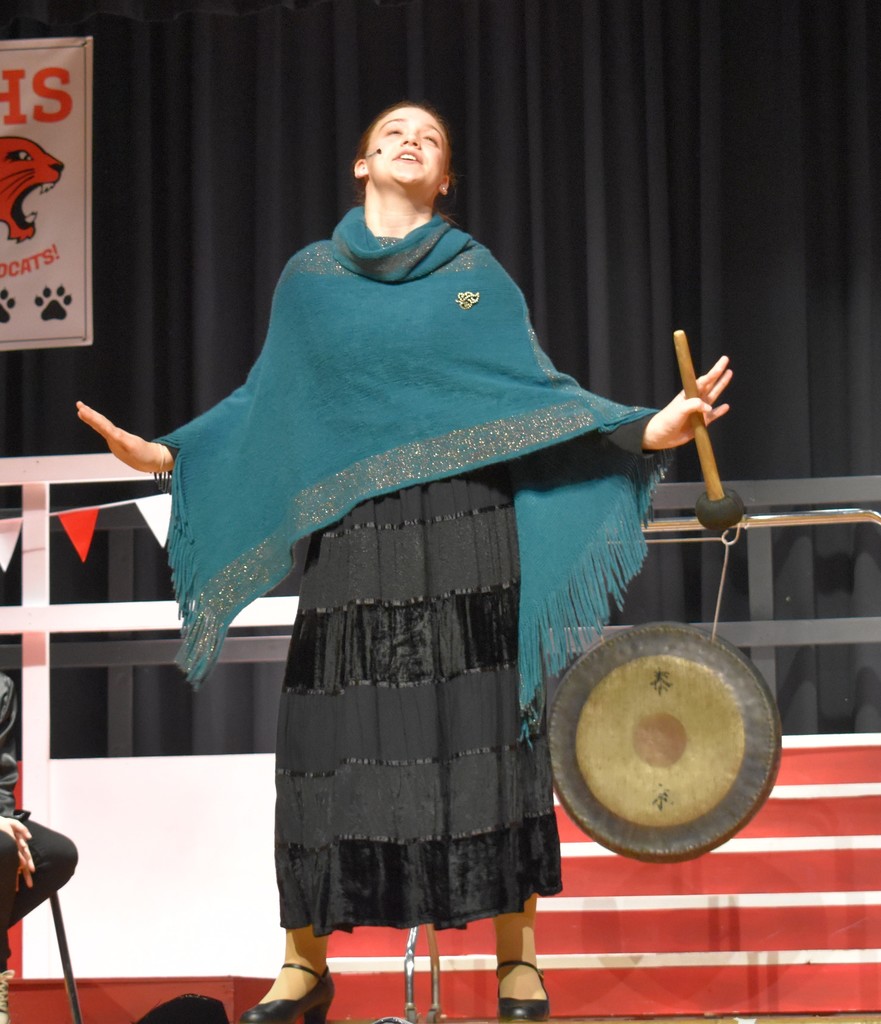PI/π MATH ‘LAB!’
Kristine Kidney’s Middle School math students completed a special “math lab” on March 14, to mark Pi/π Day! It was a fun and different way to apply students' knowledge of the ratio of the circumference of a circle to its diameter!
Students measured various circular items and recorded their circumference and diameter. Then, they found the averages of these ratios, which should have equaled 3.14!
•Pi is the ratio of the circumference of a circle to its diameter. It's an irrational, which means it doesn't repeat.
•In 250 BCE, Archimedes of Syracuse created the first algorithm to calculate pi.
•He used the Pythagorean Theorem and the areas of polygons inscribed within a circle to more accurately show pi, which is between 3 1/7 and 3 10/71.
•In 1706, Welsh mathematician William Jones used the Greek letter “π” to represent pi.
•Swiss mathematician Leonhard Euler popularized the use of the symbol in 1737








Today, March 14, is the All District Choral Festival, which was held at the High School! Fifth-grade, eighth-grade and high school choral students gathered to make music and share their choral experiences. Part of the day included rehearsing for their performance of "Connected," which will be performed on Tuesday, March 18 as part of the Music in our Schools Concert at the High School! Be sure to be there to see the results of their hard work! This large ensemble sounds magnificent! Thank you to everyone who played a role in today's event!





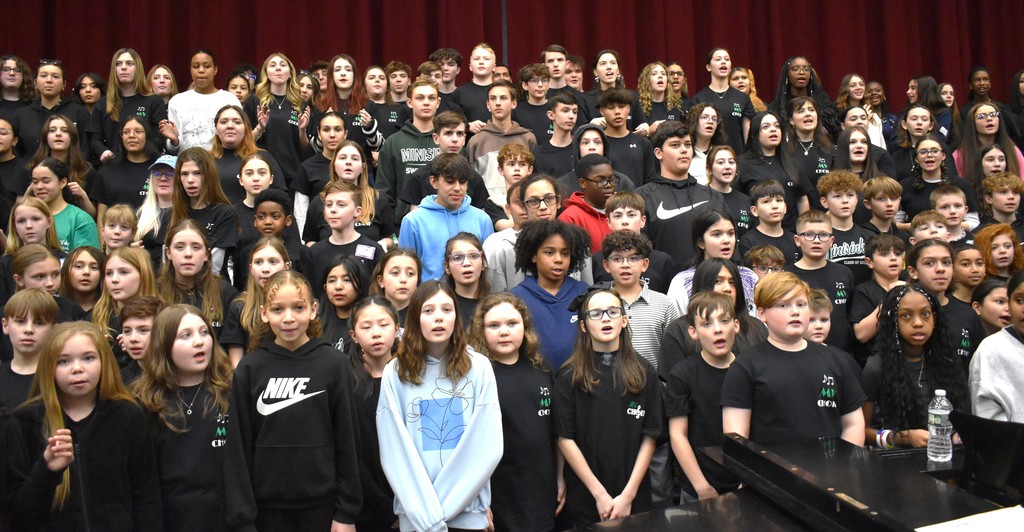



IT'S π DAY!
It's a big day for π fans, who love the number 3.14159, rounded to 3.14, and like to commemorate the day in different ways!
To mark today, Victoria Ingrassia's Middle School FACS students made peach, cherry, apple, sugar-free pumpkin and lemon meringue pies from scratch earlier this week, in preparation for today! Middle School faculty and staff were invited to stop by for a piece of their favorite π/pi/pie!
•The history of pi dates back thousands of years to the ancient civilizations of Egypt and Babylon. The Babylonians approximated pi to be around 3.125; while the Egyptians used a value of about 3.16045.
•The history of pie stretches back to ancient Egypt, with early versions being flat, crusty cakes filled with honey and grains, and evolving into both savory and sweet forms across various cultures.


“C-O-N-G-R-A-T-U-L-A-T-I-O-N-S” to eighth-grader Amaan Ali who earned second-place honors at the March 13 Orange-Ulster BOCES Regional Spelling Bee!
While Amaan does not advance to the next level of competition, he is always a true ‘W-I-N-N-E-R” in our eyes! #MINISINKProud
Amaan previously said he felt spelling was important because “it’s how we express ourselves as people” and advised future spellers was to focus on oneself when studying, adding: ”Do not hope for other people to make mistakes.”
Spelling bees are important because they foster a love for language, improve spelling and vocabulary, boost confidence, and enhance reading comprehension and memory, all while providing a fun and engaging learning experience.



The co-teach model offers unique instructional opportunities! Take a peek at Angela Dombal’s and Bridget Kelly’s ES kindergarteners busy at work with their Amplify ELA skills lessons! When the classroom’s timer goes off, the groups switch so they can practice both skills.
In this recent lesson, Mrs. Dombal used Amplify picture readers to introduce and teach the new tricky word “down” and later its opposite, “up.” "Down" is considered a tricky word because its pronunciation doesn't fully align with typical phonics rules, meaning a beginner reader might struggle to sound it out based solely on the letter sounds. The "ow" combination doesn't make its usual "ow" sound as in "cow" but instead produces a "doun" sound, making it an irregular spelling pattern that needs to be memorized as a whole.
At the same time, Mrs. Kelly reviewed new digraph sight words and then completed a chaining activity where students manipulated a sound or two within a word to create a new word. A digraph is two letters that work together to make one sound. For example, "ch" in "chin" and "ea" in "bread" are both digraphs.
•Tricky words for kindergarteners are words that don't follow the usual rules of spelling and pronunciation. They can also have unusual spellings or silent letters. Tricky words can be difficult for emergent readers because they haven't learned all the graphemes in the words. They can also be temporarily or permanently tricky. A "grapheme" in phonics is a letter or group of letters that represents a single sound (phoneme) in written language.
•A "chaining activity" in Kindergarten ELA refers to a phonics-based activity where students build a series of words by changing only one sound at a time, essentially creating a "chain" of related words, helping them practice decoding and encoding skills by focusing on letter-sound connections and identifying patterns in spelling while reinforcing phonemic awareness in young learners.








Girls Varsity Basketball Coach Jim Golden is proud to share that his team made a very inspiring run to the recent Class AA Final Four game as part of their season play!
"The team dominated in three must-win league games in the final weeks to qualify for the Section IX playoffs," he said. "Our players’ skill and toughness were on full display when they traveled to FDR and won a very physical game against a bigger team in front of a very intense FDR crowd. The girls were very impressive in their play and their composure."
Congratulations to the team on a remarkable season!

WHAT A GREAT, GREAT NIGHT!
So much fun and fundraising (the amount raised is still being tallied) at the March 12 Minisink Valley vs. Harlem Wizards game! THANK YOU to everyone who had a part in its success and to everyone who came out to be awesome spectators! There's four amazing photo galleries on the district's Facebook page for everyone to view: https://www.facebook.com/MinisinkValleyCSD
For the record...our team was super gracious and "allowed" the Wizards, our visiting guests, to win in a 63-46 final!

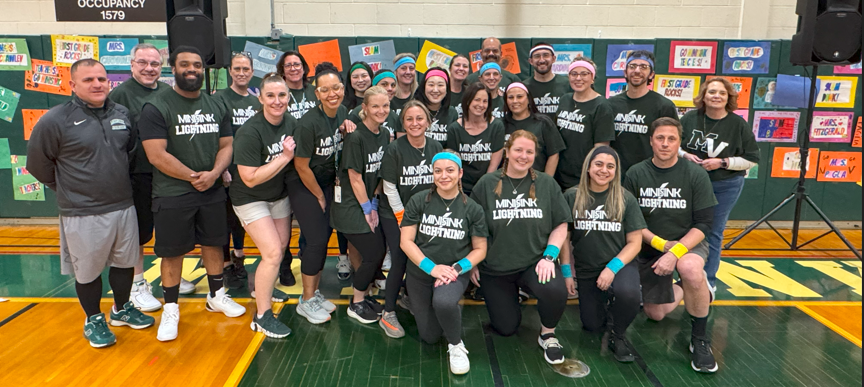
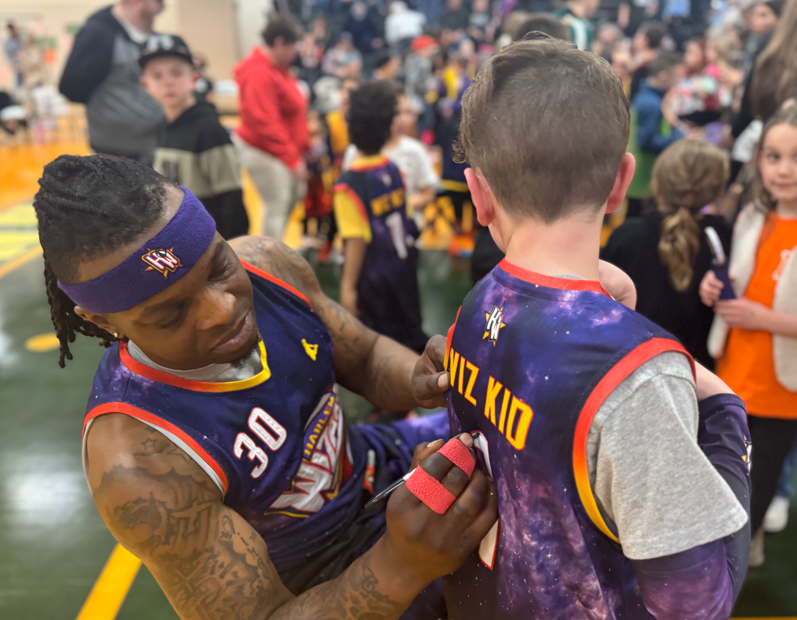
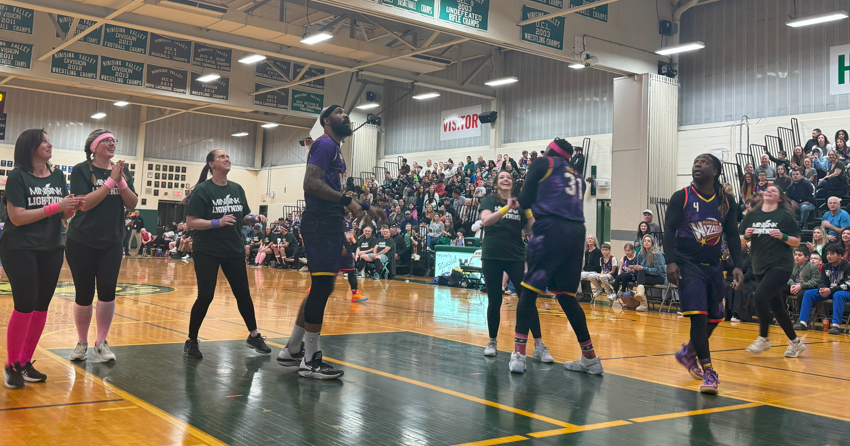



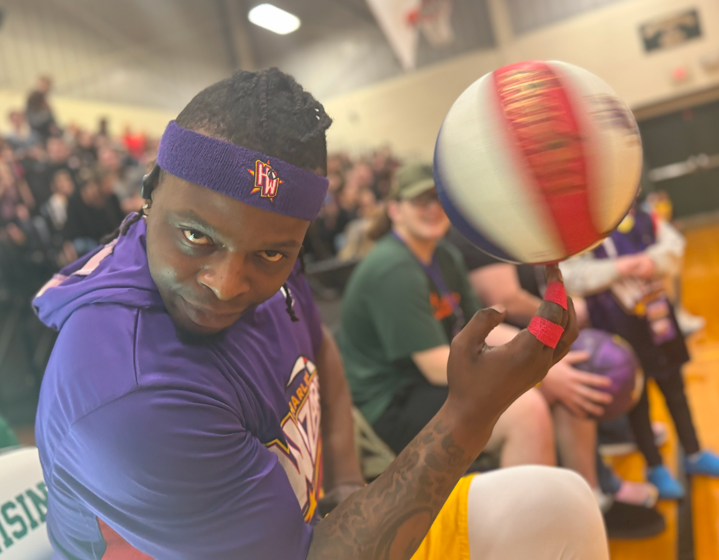
The sixth-grade teaching team recently led their students in an in-class apple mummification project, as part of their studies on Ancient Egypt!
Students studied the ancient process of embalming, which was a 40 to 70 day preservation process that included removing organs, soaking the body in natron, and wrapping it with linen. The ancient Egyptians did this because they believed the body would reunite with the soul in the afterlife.
Students soaked their apples in a mixture of salt and baking soda for one week to recreate the process. This mixture lifts the moisture out of the apple, leaving it to look like a mummy!
•Salt and baking soda are “desiccants,” or substances that remove water from materials they come in contact with. Covering an apple with these desiccants for a week removed all of the apples’ moisture, resulting in a shriveled, lighter, mummified apple.
•Mummifying, or embalming, something helps preserve it for weeks, months, or even thousands of years! The mummification process was practiced throughout Ancient Egyptian culture. It was thought to prepare the dead for a happy afterlife, so everyone—rich or poor—received some type of embalming after death.
•Egyptians used a special type of salt called natron, found along the banks of the Nile River, as their primary desiccant, which worked to preserve bodies for a very long time.
•Mummified bodies were then wrapped in linen and placed in a sarcophagus—a large stone coffin that was often lavishly decorated. Ancient Egyptians’ extensive use of the mummification process has allowed modern-day archaeologists to better understand their lives and culture.
•Archaeologists study the human past through material remains. They study the ancient past as well as the recent past. Archaeology helps us understand where people lived, how they survived, and how cultures have changed over time.
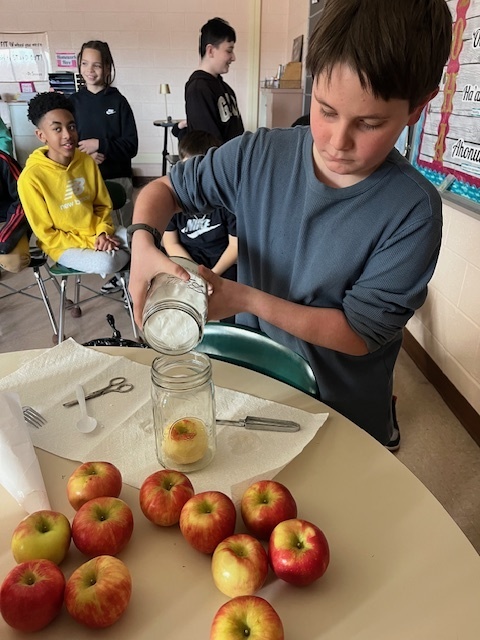






BADMINTON, ANYONE?
If you’re at the High School today --- the answer was YES!
Today, the High School’s annual (and competitive) Badminton Tournament, took place, where pairs competed in coed and boys divisions with the quest of winning and friendly bragging rights! Most of the school is involved, by either participating or as spectators, and the mission of being victorious is fierce and friendly!
Presenting the winners of the High School’s 2025 Badminton Tournament! And, congratulations to all participating pairs! See more photos on the district's Facebook page: https://www.facebook.com/MinisinkValleyCSD
COED DIVISION
First-place: Cayleigh Kuiken and Kate O’Neill
Second- place: Chloe Beck and Stetson Terpak
Third-place: Jaida Macaluso and Dylan Filip
Fourth-place: Kiera Filip and Sophia Escobar
BOYS DIVISION
First-place: Anthony Tresch and Jandro Arias
Second-place: PJ Duke and Ethan Rodriguez
Third-place: Aaron Kelter and Chris Rickard
Fourth-place: Dylan Peets and Dylan Vidal
As is tradition, the badminton duos often dress in special, unique attire to make the day even more fun!
Badminton, a fast-paced racket sport, is believed to have originated in India, evolved from the game "Poona" or "Poonah", and gained popularity among British expatriates in the 1870s. The sport is also known as "battledore and shuttlecock" and is the second most popular participation sport in the world after football.









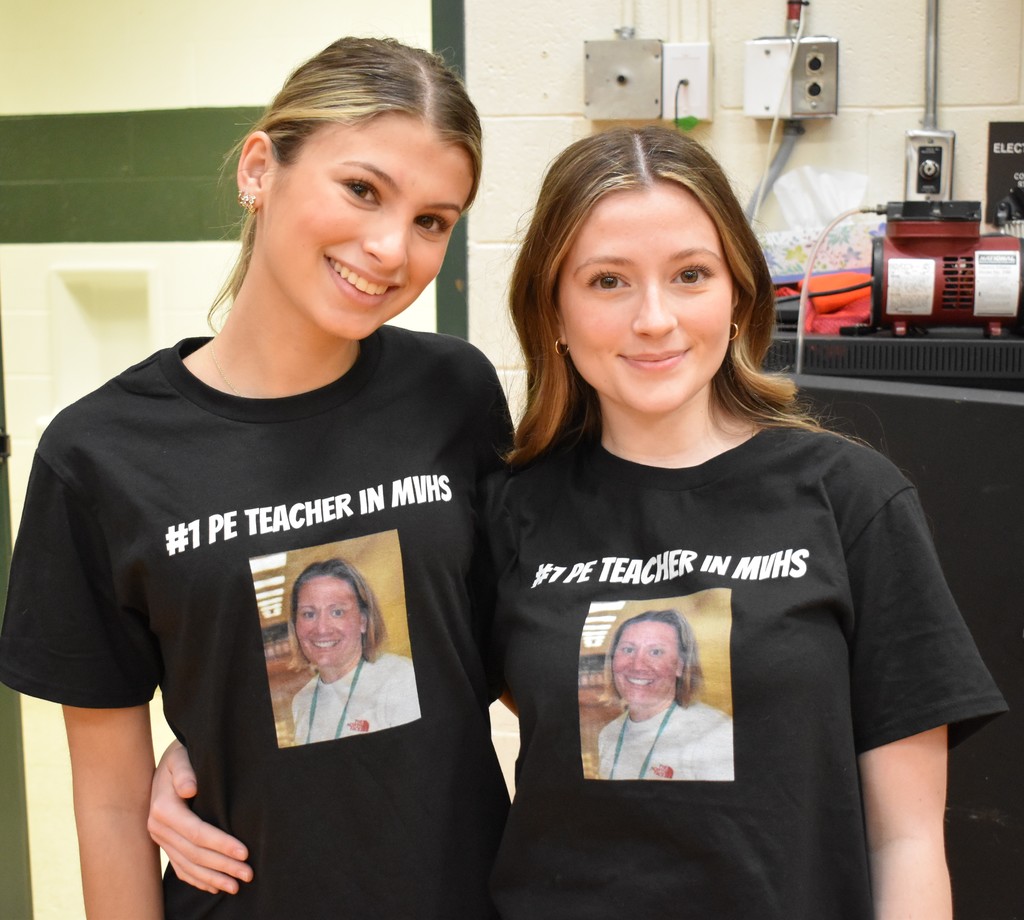
REMINDER: HAVE YOU SIGNED UP?
OPEN TO ALL AGES....DON'T MISS OUT, there's limited seating and a similar program held last fall SOLD OUT!
The High School Art Club is hosting a Spring fundraiser called “Printing” on Tuesday, March 25 at 4:30 p.m. in Room 217 at the high school.
In this workshop, participants will learn the art of printmaking on fabric. They will create stamps and use ink as a medium to make beautiful, handmade, wearable pr hangable art.
Participants will be guided by a talented Minisink Valley Art Club student to create one-of-a-kind artwork.
Reservations are required by scanning the QR code on the flyer below. Refreshments and snacks are included in the admission price:
Adults: $12
Children/students: $10
Siblings discount: $5 per additional sibling
Cash only, payable at the door.
All proceeds will go toward art scholarships, museum field trips for art students, additional supplies for our art club studio, and other events.



Brendan McGann's College Biology students have been studying light wavelengths within the electromagnetic spectrum and conducting experiments to show the necessity of carbon-based molecules for plants to conduct photosynthesis. Spinach discs "chads" were representing plants!
Studying light wavelengths within the electromagnetic spectrum and conducting experiments with carbon-based molecules is crucial to understanding the process of photosynthesis in plants. That’s because different wavelengths of light are absorbed by specific pigments within the plant, like chlorophyll, which are essential for capturing the energy needed to convert carbon dioxide into organic compounds, demonstrating the absolute necessity of carbon as a building block for plant growth through photosynthesis.
•The electromagnetic spectrum is the complete range of all types of electromagnetic radiation, including radio waves, microwaves, infrared light, visible light, ultraviolet light, X-rays, and gamma rays, organized by their wavelengths and frequencies, with radio waves having the longest wavelengths and gamma rays having the shortest. It’s a "scale" of all different types of light, even the ones we can't see with our eyes.
•In a leaf disk lab, spinach "chads" are leaf discs that float in a solution to measure the rate of photosynthesis. Photosynthesis produces oxygen, which makes the leaf discs more buoyant and float to the top. The rate at which the leaf discs float depends on the rate of photosynthesis. Darker green leaves photosynthesize faster than lighter green leaves because they absorb more light.






QUACK-QUACK!
Thanks to the kindness of parent Erin Ferraro, Kim Marasco’s IS fourth-graders had the opportunity to observe the incubation process of six Khaki Campbell ducklings!
The six ducklings were born between Feb. 23 and 24 and have been given a tremendous amount of tender loving care from their surrogates!
As part of this, students learned about the duckling development process and candling (a method used in embryology to study the growth and development of an embryo inside an egg. The method uses a bright light source behind the egg to show details through the shell, and is so called because the original sources of light used were candles.) and about the breed itself in addition to over duckling care and feeding.
As a bonus, students were able to hold these darling ducklings while doing classwork! The tiny ducklings also had visitors from Tiffany Guareno’s ES kindergarteners. (What a sweet inter-school connection!) Take a peek!
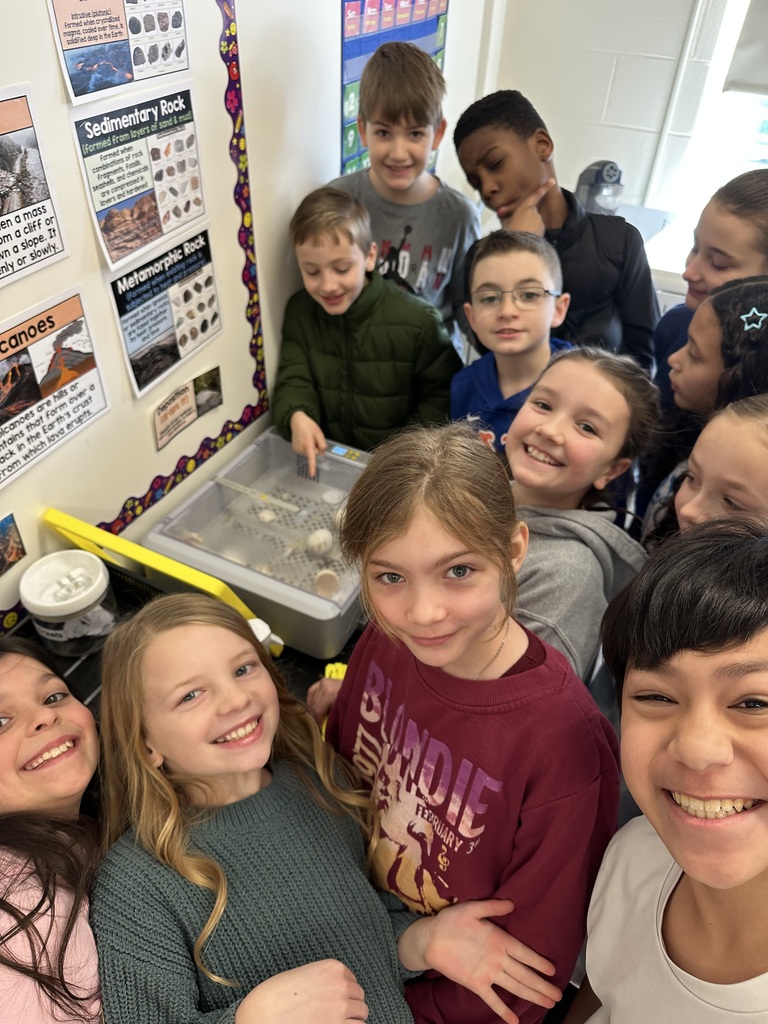
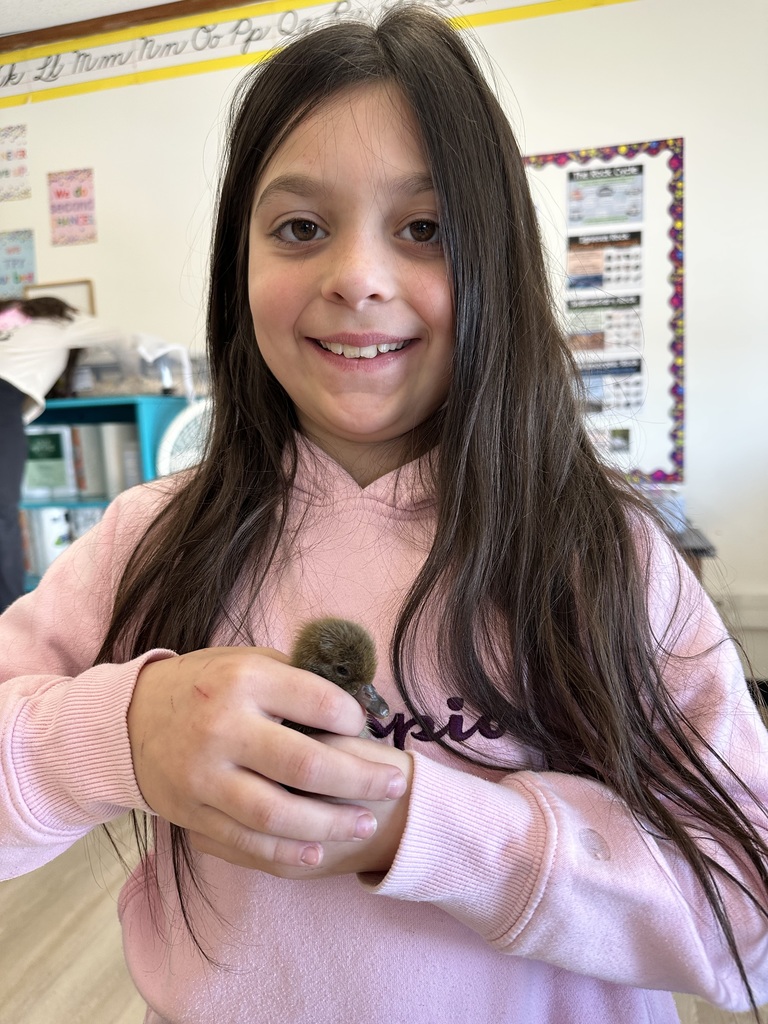

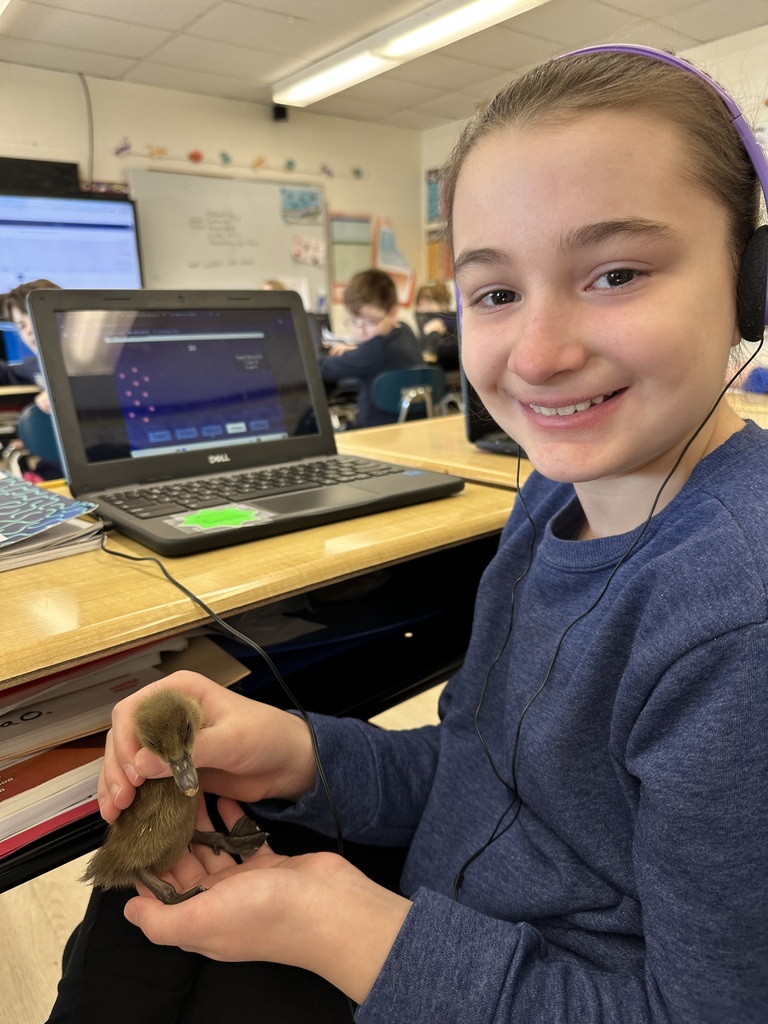

Which group has more?
It’s fun to collect different shapes! Elisabeth Harrison’s Otisville kindergarteners had so many choices: Blocks, diamonds, trapezoids, hexagons, triangles and more!
As part of their class work, Mrs. Harrison tasked her students with collecting and counting two different sets of shapes. Then, they had to draw a picture with their two collections of shapes and circle the group that had “more.”
But there was an underlying lesson in their work: It’s important for kindergarteners to know which group has “more” because this helps lays the foundation for understanding basic number concepts, like comparing quantities. This is a crucial building block for future math skills like addition and subtraction and understanding numerical value.





Otisville Elementary had SUPER SEUSSICAL time celebrating Dr. Seuss Week this week! Take a peek at our youngest students having a fabulous time wearing CAT IN THE HAT hats and expanding their culinary palates with GREEN EGGS AND HAM! Thank you to everyone who made this week so much fun!









The Middle School marked Foreign Language Week this week by inviting bilingual students to read during the morning announcements in the language that they speak at home during morning announcements! The intent was to highlight the importance of studying another language and to give these students an opportunity to showcase their bilingualism.
Information on interesting language facts and trivia was also shared along with a reminder about the importance of studying a foreign language.
Thank you to the students who shared their native languages:
• Amaan Ali/Urdu
• Danny Wang/Mandarin Chinese
• Alfonso Matute and Janely Morocho/Spanish
• Christel Toussaint/French
• Maxymilian Bochenek/Polish
Students read this message in their native language:
Good morning. My name is _______________ and I am a student in 6/7/8th grade here at Minisink. I speak English and also _(language)_. To celebrate Foreign Language Week, I am going to speak in _(language)_. I am going to tell you about today's weather and to 'have a great day and make it a great day for everyone around you' in __(language)__. See if you can understand what I am saying!" ....

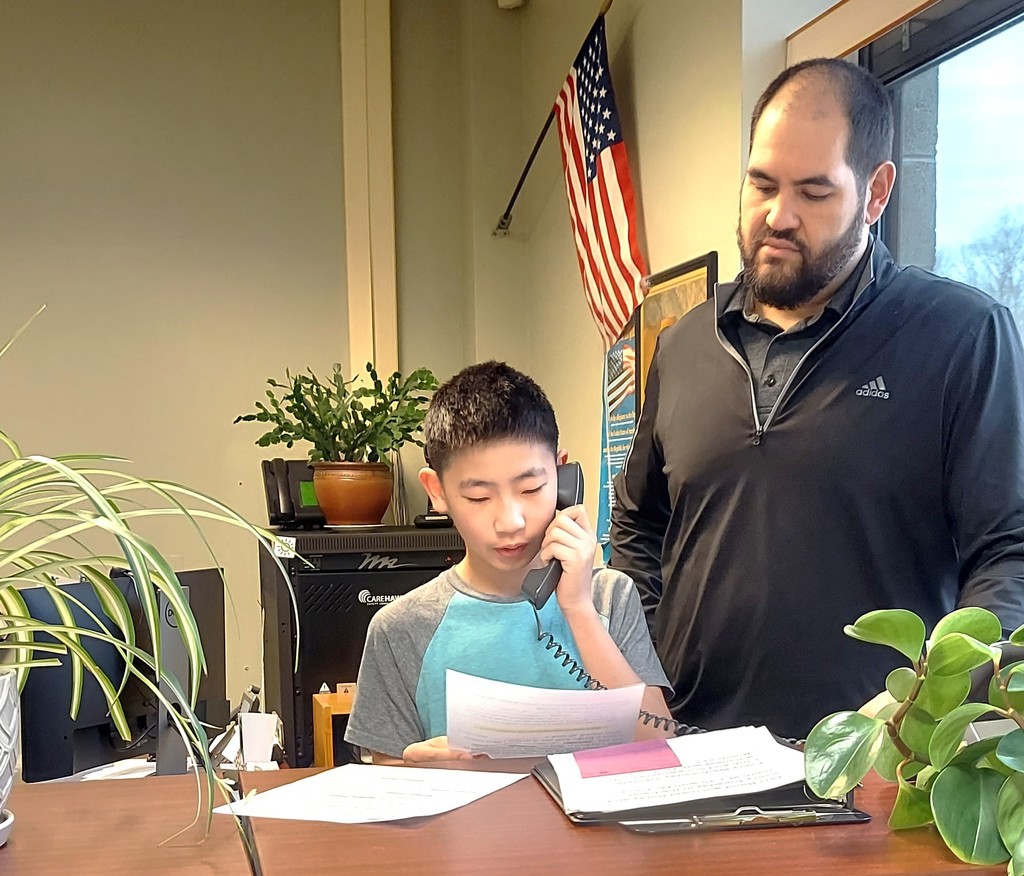
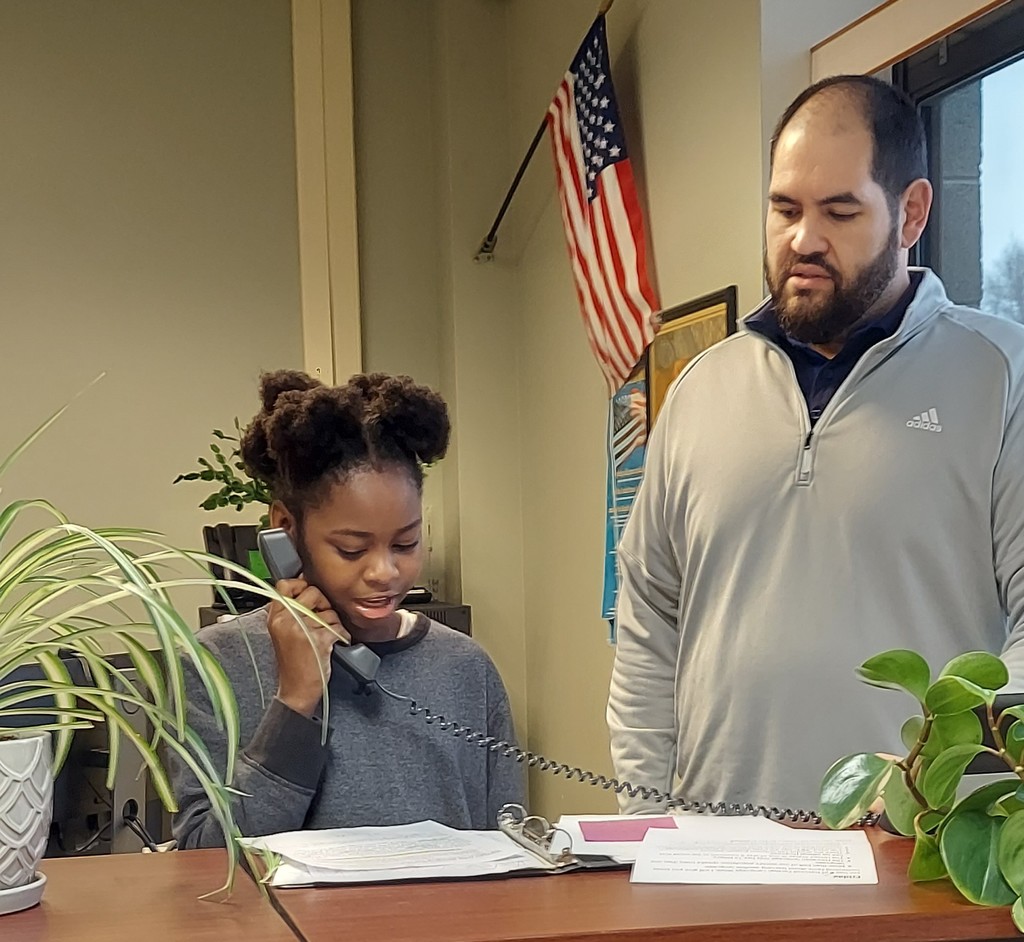


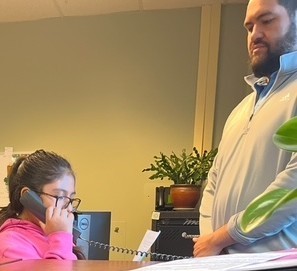
Kelsie Doller’s Modified Girls Basketball team recently went on the road for an amazing workout at The Pilates Club in Middletown, NY! The girls loved trying a new form of strength training that challenged them in new ways while improving flexibility, core strength, and overall athletic performance! Take a look!
Pilates is a type of exercise that focuses on controlled, precise movements designed to strengthen one’s core muscles, improve flexibility, posture, and balance. It’s considered a full-body workout with a primary emphasis on core engagement and can be adapted to different fitness levels. Often, pilates is performed on a mat using specialized equipment like reformers. It was developed by Joseph Pilates in the early 20th century.







Nichole Gaucher’s eighth-grade science students are studying the systems of the human body. Their recent focus was on the excretory system, which is the biological system in the body responsible for removing waste products and excess substances from the bloodstream, primarily through the organs like the kidneys, ureters, bladder, and urethra. This system filters blood and produces urine to eliminate waste from the body to maintain internal homeostasis (the process by which the body maintains a stable internal environment, or balance, despite changes in the external environment).
As part of their studies, students made a kidney model using coffee filters in order to understand how the kidneys work in a body to filter out waste. In this lab, “the water” represented water, “the red dye” represented blood, and “the glitter” mixed in with the colored water represented waste such as urea and creatinine. By making a kidney model, students were able to observe how a healthy kidney works by filtering waste in a body.
In the second portion of the lab, they poked holes through a coffee filter to represent a diseased kidney. This allowed them to compare the filtration process of a healthy versus a disease kidney. Afterward, students completed an activity where they reviewed excretory system vocabulary and labeled a system diagram. WHAT A CREATIVE SCIENCE LAB!
Coffee filters are useful in excretory system labs because they effectively mimic the function of the kidneys, acting as a visual filtration mechanism to separate waste products from a liquid mixture, just like the kidneys filter waste from blood to produce urine.

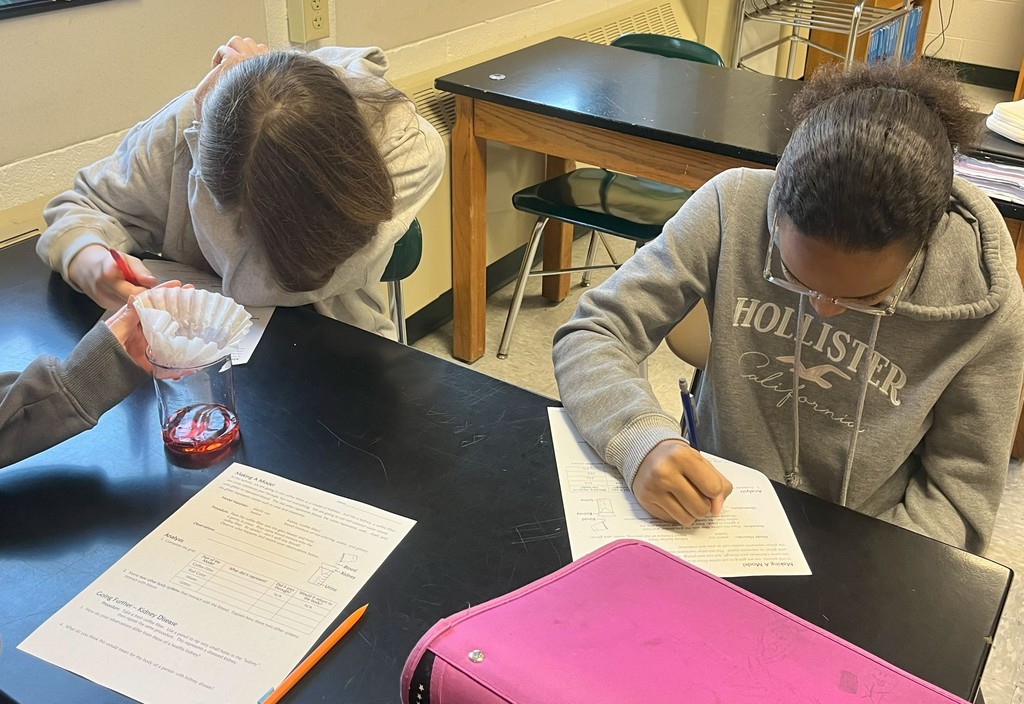



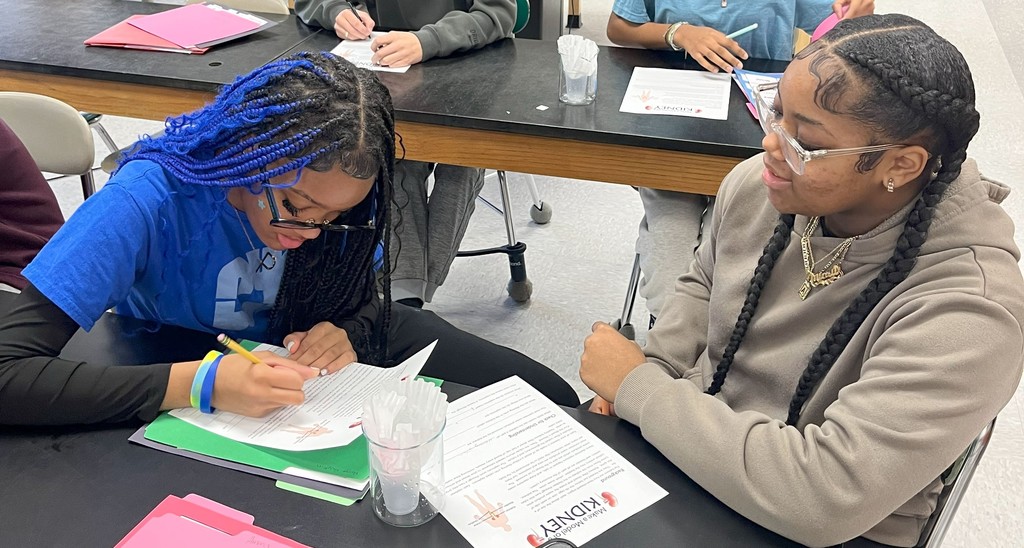

Like all district first-graders, Meghan Donahue’s ES first-graders have a unit in their science studies focusing on astronomy.
Mrs. Donahue kicked off this unit by showing her students how to create their own eclipses! Students used their Groundhog Day lesson knowledge about shadows and light to help enhance their knowledge and understanding of lunar and solar eclipses.
How fun is this? Her students used Play-Doh to re-create moon and Earth models, using pencils to hold those models in place with additional Play-Doh at the base. Then, they used flashlights to create shadows. Her young students moved their “moons and earths” in an “orbit” to create lunar and solar eclipses. Play-Doh pencil eclipses are a fun hands-on activity that helps children learn about eclipses by seeing how the relative positions of the three celestial bodies create an eclipse.
There was more unique learning fun! Later, students made their own moon rocks using baking soda and water and a little bit of coco powder for color. These rock blobs were frozen overnight. Then, they with the help of a spoon or dropper, they used vinegar to dissolve their moon rocks! What a great activity helping students to learn about space, the scientific process and even how vinegar reacts with baking soda!






As part of the Elementary School’s ongoing commitment to character education, the ICON Dance Team of New York City visited the school today, March 5, for a high powered and colorful show focusing on music and dance and which included an important conversation on spotting and stopping bullying, respecting yourself and others, taking responsibility for your actions and leading a positive life.
The students were mesmerized with the talent of the dance trio and understood their important messages! Ask your student about today’s assembly and please continue this important conversation!






WE'RE ALL IN THIS TOGETHER!
Today, March 5, was ACT 1 PREVIEW/DRESS REHEARSAL DAY for the Middle School Drama Club's production of Disney's HIGH SCHOOL MUSICAL JR.!
The cast and crew presented two shows featuring the first-half of the production to student and faculty audiences!
WHAT A SHOW! Remember, opening is tomorrow, March 6 at 7 p.m. at the Middle School Auditorium!
Don't miss out! Tickets: https://www.onthestage.tickets/.../678076f055ebc03250cd5693



